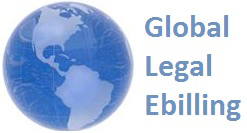Years ago I had read a statistic that CTC (Continuous Tax Control) systems were expected to be in place in 80% of the countries worldwide by 2025.
Implementation of CTC represents an additional step in the billing workflow. If required for the sale of services, a law firm within the country must transmit information on the cost of services billed to the CTC system before rendering an invoice to their clients. A copy of the approved transaction should be provided to their client as part of the supporting documents when an invoice is uploaded to the ebilling system.
In the next two years, 22 countries are coming on-line with CTC systems, and a colleague expects that CTC will be implemented in every country globally except the US, Canada and the UK by 2035.
Tax compliance is an area of specialization within GLE. If you have questions on CTC systems, contact us at info@globallegalebilling.com.



